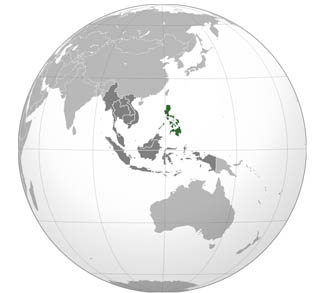In the rapidly urbanizing ASEAN region of today, upward mobility requires a diploma, degree, and some form of post graduate qualifications, particularly within the desirable publicly listed companies in the region. Upon closer scrutiny of what is taught at these “B” schools, a colonial hangover and psychological dependence on “Western” ideas appears to still linger on. This is somewhat ironic in a region where most Southeast Asian governments espouse their own national values and “ways of doing things.”
Southeast Asian countries may stand as politically independent, and well on their way to achieving economic independence, but many today are still trapped by a syndrome of intellectual colonization. As business schools steadfastly stick to an occidental business curriculum, former “western colonial masters” still dominate their ex-colonies, though now the bindings are intellectual.
Business, entrepreneurship, and management courses are the fastest growing areas in Southeast Asian education. Along with ICT, these are the most popular areas within both the private and public higher education sectors. The relatively low overhead and operational cost per cohort is a financial windfall for colleges and universities. Thus, business education has become a cash cow for colleges and universities in the region.
What makes these courses financially lucrative is the relatively low cost of teaching resources for basic courses compared to other disciplines. Very little infrastructure aside from classrooms and lecture theatres are required. A great number of business schools develop curriculum around an array of “international” edition US-sourced textbooks on offer by the major educational publishers.
Consequently the intelligentsia of many business schools has focused on quantity over quality. They are bureaucratic diploma factories based upon single textbook unit courses, orientated around exams that at best measure memory and retention rather than creativity. To cap it all off, these schools are burdened down with quality assurance processes at administrative and teaching levels. With the high time commitment needed to adhere to these processes, mediocrity is ensured through the rigidity that these systems create. The administration of such schools also tend to overwhelmingly prefer the imported hype of sensationalist management gurus, even if their methods are not directly suited to the different contexts and varied business situations within the local environment.
The great paradox of Southeast Asian business and entrepreneurship education is that local higher education institutions espouse values within their respective cultural frameworks, but what is actually taught is distinctly “Western.”
There has been little debate about the fit between “Western” management thinking and the make-up and behavior of local corporations, entrepreneurs, and the general business environment. As a consequence, the relevance of many theories has been accepted without question.
The preference for the ‘latest popular’ management knowledge often leads to misinterpretations, as very few management and entrepreneur instructors actually have much first hand business experience. Thus, rigid interpretations of management still influence entrepreneurship courses. Many entrepreneurship courses advocate market research through focus groups, which are not suited to new-to-the-world products in developing markets.
Most of the curriculum is based on general misconceptions that both the media and imported textbooks have propagated over the last 15 to 20 years. Entrepreneurship has been glorified by media stories, biographies of successful entrepreneurs, and events like ‘entrepreneurship week’, ‘business plan competitions’, and ‘entrepreneurship awards.’
Business literature in Southeast Asia is primarily US-based, which reflects the needs of a post-industrial society rather than a developing economy. This is partly responsible for one of the biggest tragedies of entrepreneurship education in the region. Very little if any focus is given to various technologies that a potential entrepreneur will require in a new business. The acquisition of technology is one of the greatest difficulties that SMEs in developing countries face, and little is done within the education sphere to solve this problem. A graduating student may have acquired some general business skills but has little or no knowledge or access to the means to acquire the knowledge to develop a farm, a small engineering shop, a food manufacturing operation, or a cosmetic manufacturing operation. One can see around the ASEAN region that it is the non-business schools that show innovation with their outreach programs while business schools fall into the trap of cashing in on their BBA, MBA, and now DBA programs.
Evolving Southeast Asian business and entrepreneurship curriculum has followed the post-industrial models with a number of errors and mistakes. Due to the developing nature of most Southeast Asian economies, there should be an emphasis on manufacturing which should include new product development and manufacturing line and system development. However the ‘cut and paste’ curriculum from business schools in post-industrial societies has largely dropped manufacturing due to the cohort interest in the services sector, where the employment opportunities exist. This leads to a mismatch of what Southeast Asian business schools offer and what business and entrepreneurship students need. As a result business and entrepreneurship graduates flood out into the market place without any technology skills, crowding the services sector which is not creating extra employment or real economic growth. Business and entrepreneurship graduate employability is a major issue facing Southeast Asian economies today, with thousands of unemployed business graduates all across the region.
To compound the problem further, governments and local corporations have a preference for foreign advisors and consultants, shunning their own. Foreign advisors and consultants are often guided by the misconception that their advice will be superior to local advisors and consultants, even though foreigners may have little real understanding of local context. This doesn’t occur because of any vacuum in knowledge and wisdom of local academics. In fact many Southeast Asian academics are very successful in other universities around the world. Some have written very sound academic dissertations and hypothesis but fail to get them published through the publishers that can bring them to mass popularity. Rather they sell a few hundred copies and can be found gathering dust on library shelves.
Part of this preference for foreign expertise is based on the belief that something imported is better, thus the ‘old colonial hangover.’ However the cost of this hangover is holding back indigenous intellectual development and preserving a state of neo-colonialism at a time when the US and Europe are far from possessing a monopoly of new ideas.
The irony is that Asian ideas have more influence on “Western” management thought than in Asian management thinking. The only probable exception is Confucianism, which could cautiously be associated with the structure, process, and strategies of family-owned Chinese businesses in Southeast Asia. Although Sun Tzu’s The Art of War and Buddhist Dharma originated in the Asian region, it has primarily been “Western” management thinkers who have applied the respective philosophies to management, at least in these contemporary times.
There is a drastic shortage of business and entrepreneurship lecturers within the region. Stringent criteria for the hiring of lecturers eliminate the potential to employ mature, experienced practitioners or “practademics.” For example under the regulations of one aspiring university in Malaysia that portrays itself as the “Harvard of the East”, it would not be possible to employ people like Bill Gates, Mark Zuckerberg, or the late Steve Jobs, even as an adjunct, due to qualification issues. Thus those that gain employment within the region’s colleges and universities have formal qualifications, usually without much, if any experience.
Southeast Asian business and entrepreneurship academics consequently tend to lack the depth of knowledge about what they teach and rely on textbooks and popular management books as the basis of their teaching. This lack of depth of knowledge in many fields leads to a lack of confidence to develop curriculum outside the familiar textbooks they have available to them, thus inhibiting the ability to provide an education according to local needs. With this comes a reinforcement of the unconscious bias towards “Western” literature as local literature is still few and far between, and in many cases is merely a translation of an existing foreign textbook. Any original local material usually lacks peer acceptance due to the lack of ability of many to critically appraise it.
This ‘cut and paste’ culture without questioning and adaptation is holding back the development of business education in the region.
Of late, universities have realized the need for research to build esteem and gain a ranking. However this has been turned into a meaningless chase of KPI figures. Many new academic journals are cashing in on this unhealthy focus on SCOPUS indexing and now offer ‘pay for publishing’ arrangements, rather than the traditional ‘double blind peer review’ system. To date, most local research has tended to emulate other research, applying theory to local contexts, rather than developing indigenous hypotheses. This lack of originality is preventing the rise in international stature of local business academics and is the loss of a great opportunity to develop Asian-based management knowledge.
The education gap between Southeast Asia, Europe, Australia, and the US is going to be felt for a long time. Part of the problem is the inept ability and resistance to change. Part of the problem is the lack of skilled, experienced and knowledgeable people. However the rigidity of educational institutions is something that can be solved, through some visionary thinking.
There is also another problem. It is apparent that creativity is an important aspect of education, which is deeply lacking in Asian curriculum throughout the whole school system within most of the ASEAN region. In business and entrepreneurship creativity is vital in the areas of opportunity recognition and construction, strategy development and execution, marketing, new product development, and solving general problems related to entrepreneurship. Creativity, rather than intelligence appears to be a more critical factor in achieving success.
It could be argued that ASEAN‘s failure to develop its own contextually relevant theories and the corresponding positivist practices, where instead culturally unsuited practices are utilized, is a missed opportunity to develop new and dynamic methods and thus competitive advantages within the region. This is the challenge to management academics and practitioners in ASEAN. It is the task of looking through the rich history, culture, society, stories, and philosophies of the region for the inspiration to develop and construct homegrown management ideas, rather than importing ideas developed in other parts of the world.
Confucian, Buddhist, and Islamic institutes exist all over the region, but there has been little focus on developing these philosophies into viable management paradigms. This has led to an intense vacuum of original management thinkers in the ASEAN region today.




